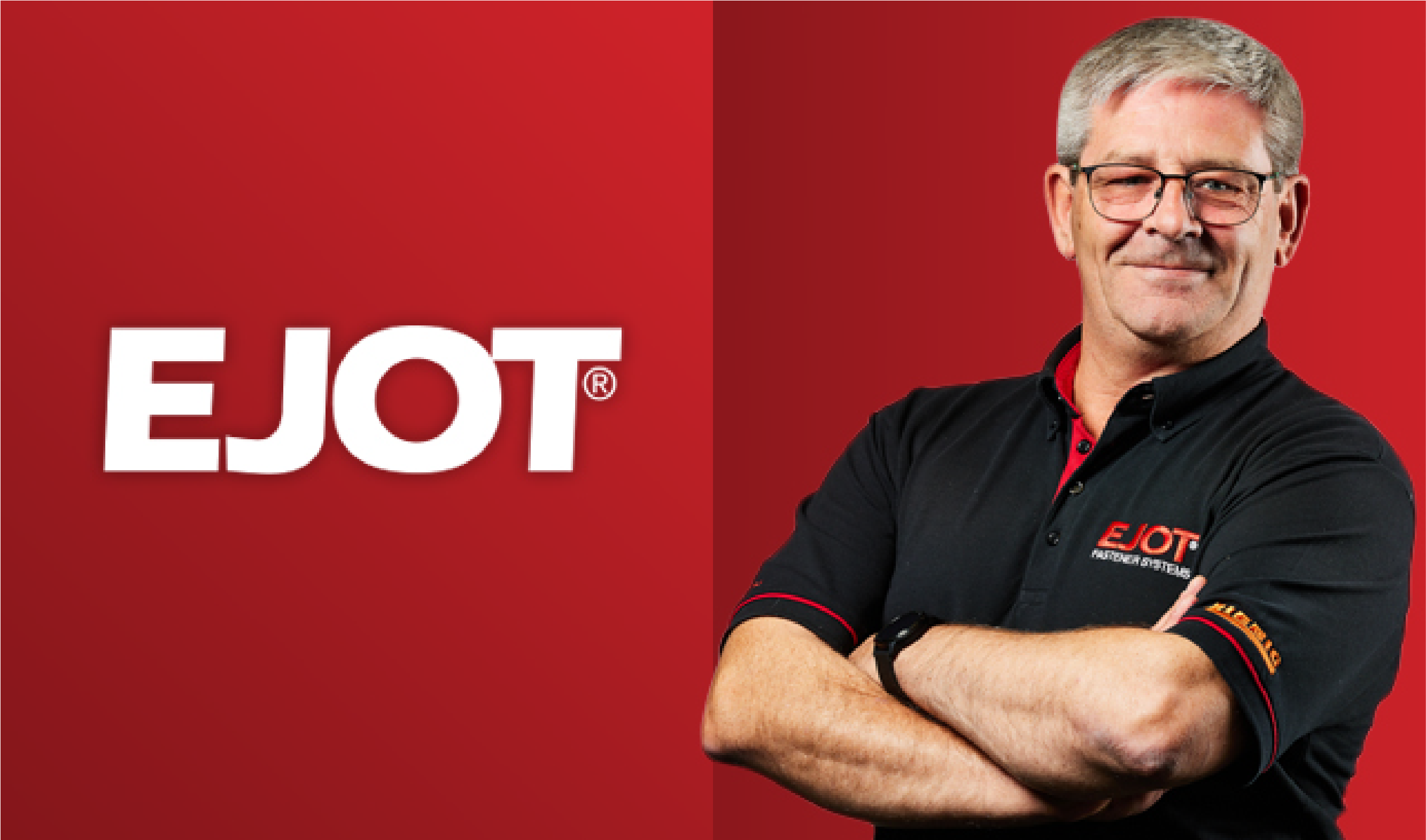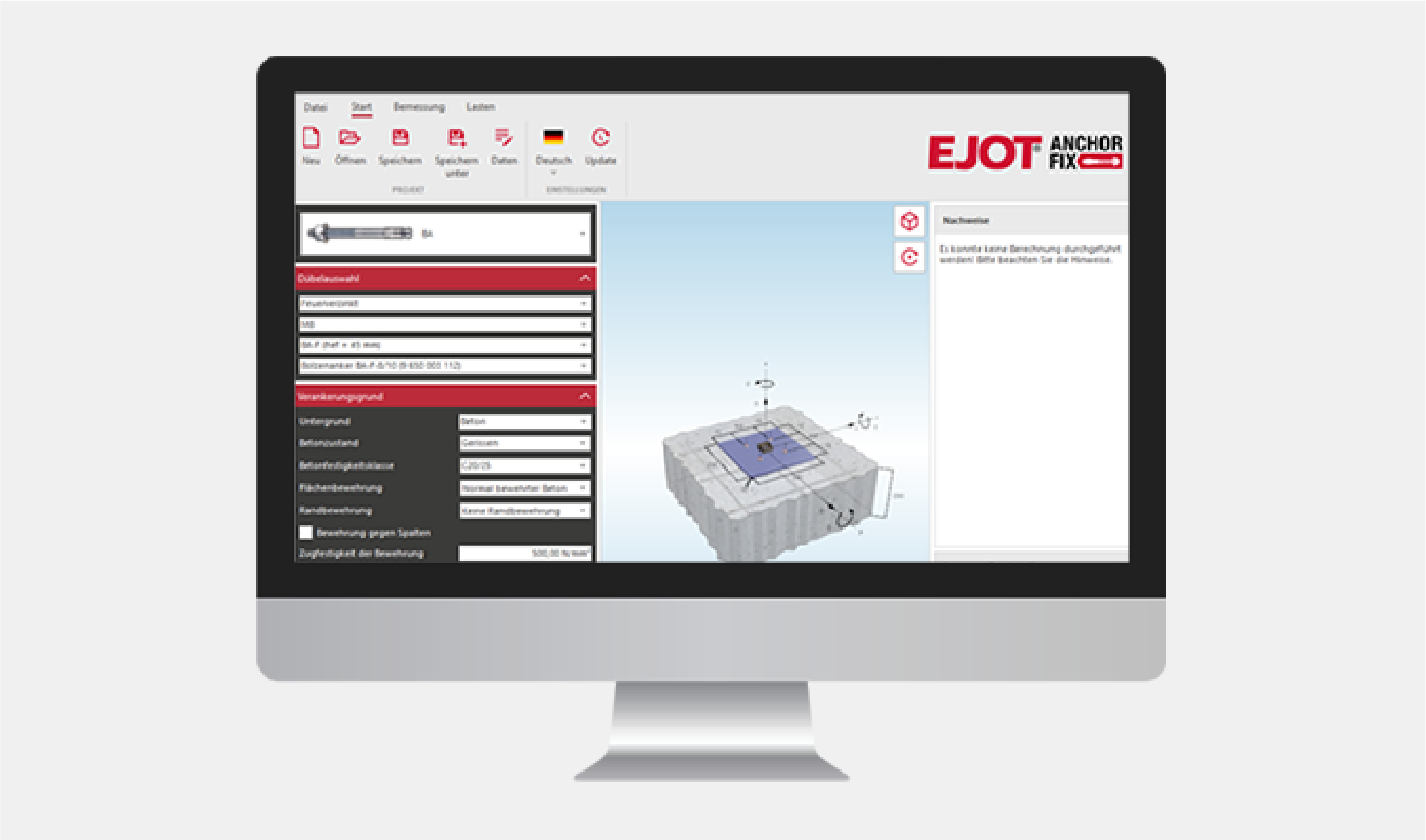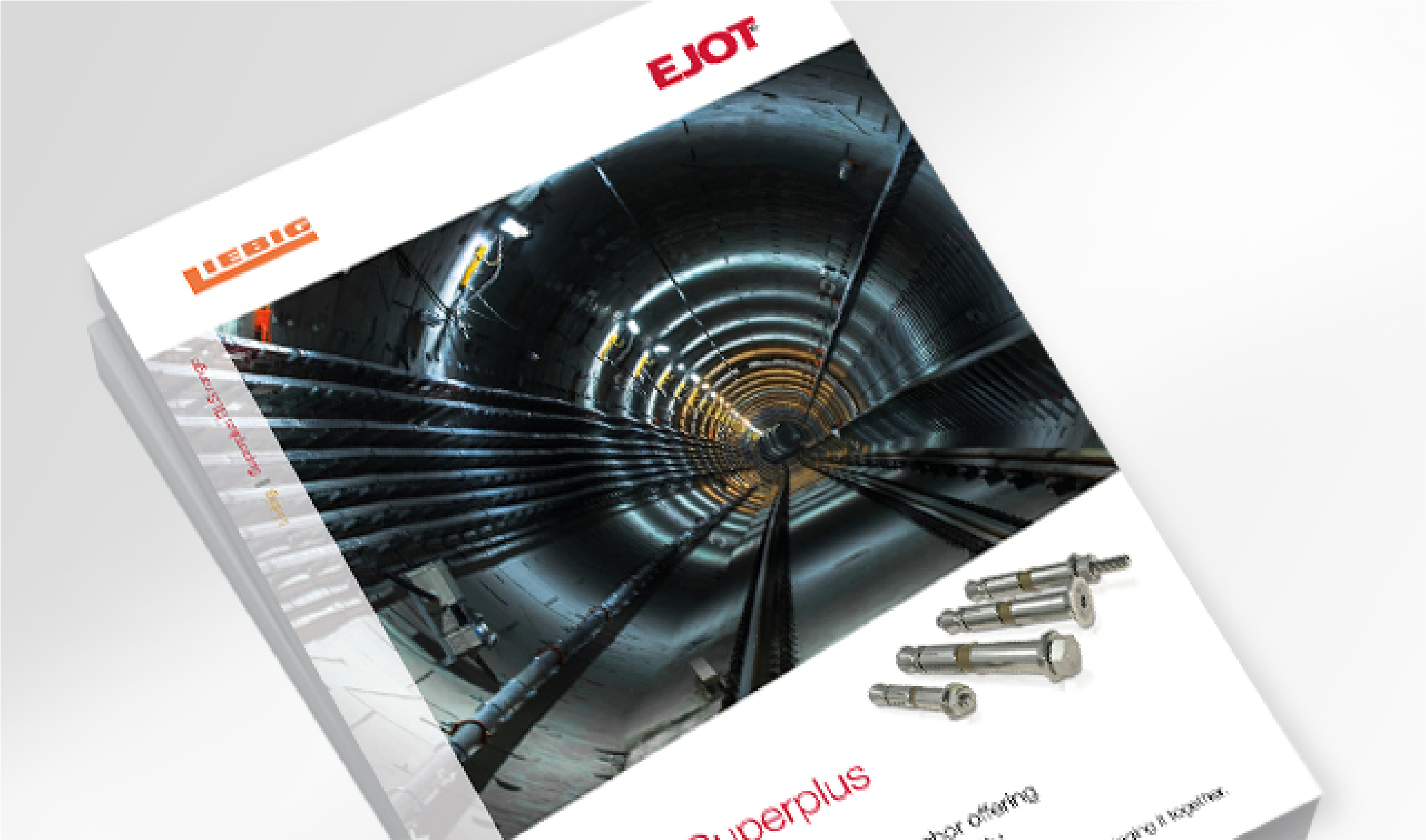Part 2:
Modularity means...
Flexibility
How modular anchors provide greater flexibility in concrete applications
Anchoring into concrete need not be constrained by convention. In the past shallow concrete depth, spacing restrictions and edge distances have been major hurdles to cost effective anchoring because it has resulted in the need for custom-made solutions with lengthy lead times.
Today, however, modular concrete anchors from EJOT are redefining the possibilities. Its LIEBIG Superplus BLS is an innovative type of anchor which is self-undercutting and requires no special setting tool during installation.
Importantly, this gives the anchor excellent performance characteristics with a relatively small diameter, making it particularly effective for applications where only a shallow embedment depth is possible or where there is a need to either anchor at reduced spacings or close to the edge of the concrete. This enables savings to be made on baseplates which can be smaller than usual when anchoring with Superplus.
The Superplus BLS is a unique heavy duty anchor because it enables two embedment depths per anchor diameter. This gives far greater flexibility to the designer to enable the embedment depth necessary to satisfy the design criteria to be met without a need to change baseplate design. By increasing the anchor length, as defined by both the effective embedment depth and thickness of the member to be fastened, a greater volume of concrete can be activated by the anchor, increasing the concrete capacity and thus the tensile resistance of the anchorage.
So, for example, if the baseplate is manufactured with a given hole diameter, but in some areas of the project a greater resistance is required, then the option is there to use the same Superplus BLS anchor for both. The diameter will be the same, but the longer embedment depth achieves a higher tensile strength, and the ultimate benefit is a saving on extra manufacturing costs.
This anchor’s versatility comes from the utilisation of a larger cone of influence that is created, resulting from embedding the anchor deeper in the concrete. Increased embedment depth = increase cone volume = increased cone surface area = increased tensile resistance.
Crucially, this cone of influence also has an impact on the spaces permissible between anchors and how close they can be used to the edge of the concrete. Being able to use anchors at closer points is beneficial in situations/applications such as tunnel ventilation fans and overhead catenary supports where the position of the support may be close to the edge of a precast tunnel segment.
With any mechanical anchor, the size of the cone is dependent not only on the embedment depth, but also on the way the anchor engages with the concrete. Expansion anchors, for example, require larger cones of influence compared to undercut anchors. Whilst cones are allowed to overlap, the minimum anchor spacing for undercut BLS anchors is significantly less that it would be for a normal heavy duty expansion anchor.
The modular design of Superplus BLS adds to its flexibility further because bespoke lengths of the main threaded bolt and simple adjustments to the distance sleeve, which relates directly to the base plate thickness, can be made by EJOT with relative ease. So, for example, where a stand-off is required from the concrete, such as to allow for anchor testing to be conducted after the anchor is installed, this can be accommodated simply by using a longer threaded bolt length. And all this is achieved without the cost and long lead times normally associated with custom-made solutions.
This customisation flexibility was one of the reasons behind Superplus BLS being specified for the attachment of thirty concrete silos on a major construction site for HS2. The silos were needed during the construction of Old Oak Common station in west London where six sub-surface platforms are being created by forming an 850-metre long, 750,000 cubic metre concrete box.
This concrete is being cast on site from a large batching plant where engineers had to ensure silos could be securely attached to a concrete slab of varying thicknesses quickly, and to a structurally reliable standard. Superplus BLS was able to meet this brief and accommodate the wind loads and variable loading conditions due to filling and emptying of the silos.
Another very different example of the flexibility offered by Superplus BLS is its specification within a jet engine testing facility. Here Superplus BLS-P anchors – which feature a hex nut, washer and threaded stud – were produced with an extended threaded rod. This met the specification for providing a way to remove and replace the test machinery as required without loss of performance from the anchors.
In reality, however, most applications by nature are non-standard. So, what better an approach than that of Superplus BLS which is highly configurable to the client requirements, rather than expecting the application to be designed in a way that suits what the anchor demands.
That is why Superplus BLS offers the best of both worlds – a standard size range of products that will suit application ranges ‘off the shelf’, as well as the flexibility to modify in a high percentage specifications to deliver the right solution.
Today, however, modular concrete anchors from EJOT are redefining the possibilities. Its LIEBIG Superplus BLS is an innovative type of anchor which is self-undercutting and requires no special setting tool during installation.
Importantly, this gives the anchor excellent performance characteristics with a relatively small diameter, making it particularly effective for applications where only a shallow embedment depth is possible or where there is a need to either anchor at reduced spacings or close to the edge of the concrete. This enables savings to be made on baseplates which can be smaller than usual when anchoring with Superplus.
The Superplus BLS is a unique heavy duty anchor because it enables two embedment depths per anchor diameter. This gives far greater flexibility to the designer to enable the embedment depth necessary to satisfy the design criteria to be met without a need to change baseplate design. By increasing the anchor length, as defined by both the effective embedment depth and thickness of the member to be fastened, a greater volume of concrete can be activated by the anchor, increasing the concrete capacity and thus the tensile resistance of the anchorage.
So, for example, if the baseplate is manufactured with a given hole diameter, but in some areas of the project a greater resistance is required, then the option is there to use the same Superplus BLS anchor for both. The diameter will be the same, but the longer embedment depth achieves a higher tensile strength, and the ultimate benefit is a saving on extra manufacturing costs.
This anchor’s versatility comes from the utilisation of a larger cone of influence that is created, resulting from embedding the anchor deeper in the concrete. Increased embedment depth = increase cone volume = increased cone surface area = increased tensile resistance.
Crucially, this cone of influence also has an impact on the spaces permissible between anchors and how close they can be used to the edge of the concrete. Being able to use anchors at closer points is beneficial in situations/applications such as tunnel ventilation fans and overhead catenary supports where the position of the support may be close to the edge of a precast tunnel segment.
With any mechanical anchor, the size of the cone is dependent not only on the embedment depth, but also on the way the anchor engages with the concrete. Expansion anchors, for example, require larger cones of influence compared to undercut anchors. Whilst cones are allowed to overlap, the minimum anchor spacing for undercut BLS anchors is significantly less that it would be for a normal heavy duty expansion anchor.
The modular design of Superplus BLS adds to its flexibility further because bespoke lengths of the main threaded bolt and simple adjustments to the distance sleeve, which relates directly to the base plate thickness, can be made by EJOT with relative ease. So, for example, where a stand-off is required from the concrete, such as to allow for anchor testing to be conducted after the anchor is installed, this can be accommodated simply by using a longer threaded bolt length. And all this is achieved without the cost and long lead times normally associated with custom-made solutions.
This customisation flexibility was one of the reasons behind Superplus BLS being specified for the attachment of thirty concrete silos on a major construction site for HS2. The silos were needed during the construction of Old Oak Common station in west London where six sub-surface platforms are being created by forming an 850-metre long, 750,000 cubic metre concrete box.
This concrete is being cast on site from a large batching plant where engineers had to ensure silos could be securely attached to a concrete slab of varying thicknesses quickly, and to a structurally reliable standard. Superplus BLS was able to meet this brief and accommodate the wind loads and variable loading conditions due to filling and emptying of the silos.
Another very different example of the flexibility offered by Superplus BLS is its specification within a jet engine testing facility. Here Superplus BLS-P anchors – which feature a hex nut, washer and threaded stud – were produced with an extended threaded rod. This met the specification for providing a way to remove and replace the test machinery as required without loss of performance from the anchors.
In reality, however, most applications by nature are non-standard. So, what better an approach than that of Superplus BLS which is highly configurable to the client requirements, rather than expecting the application to be designed in a way that suits what the anchor demands.
That is why Superplus BLS offers the best of both worlds – a standard size range of products that will suit application ranges ‘off the shelf’, as well as the flexibility to modify in a high percentage specifications to deliver the right solution.









